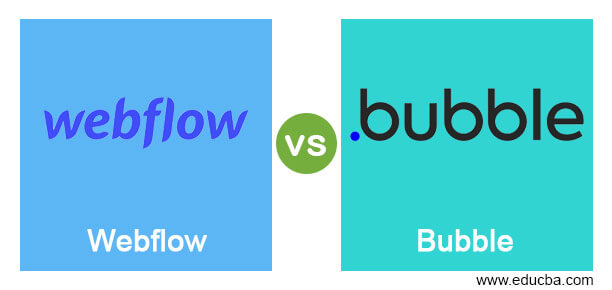- April 4, 2023
- udana wickramasinghe
- 0 Comments
- 511 Views
- 1 Likes
- Low Code Development
Bubble.io vs. Webflow: Which Low-Code Platform is Better for Your Business?

Overview of Bubble.io and Webflow:
Bubble.io is a no-code development platform that allows users to build custom web and mobile applications without any coding knowledge. It provides a visual interface for designing the user interface and defining the application logic. Bubble.io also includes a database and API integrations, making it a comprehensive tool for building complex applications. Webflow, on the other hand, is a visual development platform that allows users to design and launch responsive websites without any coding knowledge. It offers a wide range of templates, design tools, and integrations, making it a popular choice for web designers and developers.Comparison of Features and Capabilities:
User Interface Design:
Both Bubble.io and Webflow offer a drag-and-drop interface for designing the user interface. However, Bubble.io has more advanced capabilities for designing complex user interfaces with dynamic elements and custom animations. It also offers a wide range of responsive design options, making it easier to create applications that work seamlessly across different devices.Application Logic:
Bubble.io offers a comprehensive set of tools for defining the application logic. It includes a visual workflow editor that allows users to define complex workflows and automate tasks. Bubble.io also provides a database and API integrations, making it easier to integrate data from external sources.
Webflow, on the other hand, is more focused on front-end development. While it allows users to define some application logic using custom code, it lacks the comprehensive capabilities of Bubble.io.
Collaboration and Teamwork:
Bubble.io offers robust collaboration and teamwork capabilities. It includes a version control system that allows multiple team members to work on the same application simultaneously. It also provides tools for managing user permissions and roles, making it easier to control access to sensitive data and functionality. Webflow also offers collaboration capabilities, but they are not as advanced as those of Bubble.io. It allows users to share projects and collaborate with team members, but it lacks the granular control over user permissions and roles.Integrations:
Both Bubble.io and Webflow offer a wide range of integrations with external services and tools. Bubble.io provides native integrations with popular services like Stripe, Google Maps, and SendGrid. It also supports custom integrations using its API.Webflow also offers integrations with a wide range of services, including Zapier, Google Analytics, and Mailchimp. However, it does not provide native integrations with as many services as Bubble.io.
Pricing:
Bubble.io offers a free plan with limited features and a paid plan starting at $29 per month. The paid plan includes more advanced features and capabilities, including custom domains and increased storage and bandwidth.
Webflow offers a free plan with limited features and a paid plan starting at $12 per month. The paid plan includes more advanced features, such as custom code and increased storage and bandwidth.

Leave a Comment